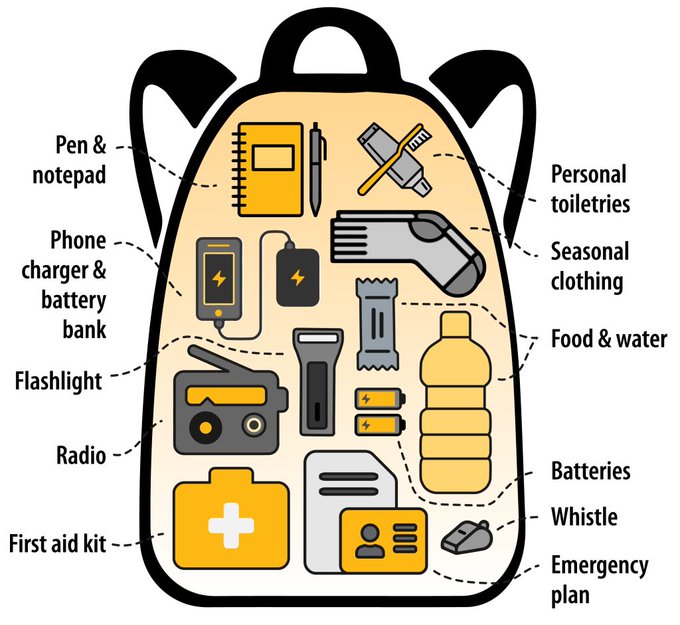
Being prepared for emergencies such as wildfires or flooding is crucial for the safety of you and your family. Listening to emergency communications from local authorities and having a well-equipped 72-hour GO-bag ready can make all the difference in ensuring a swift and organized evacuation. Here’s how you can effectively prepare:
Stay Informed:
Pay close attention to local news, radio broadcasts, and official emergency communication channels. Follow social media accounts of local authorities, fire departments, and emergency management agencies for real-time updates on potential hazards and evacuation orders.
Create a Family Emergency Plan:
Develop a clear and detailed emergency plan with your family. Decide on meeting points, communication methods, and emergency contacts. Ensure everyone knows the plan and practices it through occasional drills.

Pack a 72-Hour GO-Bag:
Assemble a well-stocked GO-bag for each member of your family. This bag should contain essential items to sustain you for at least 72 hours.
- Include items such as:
- Non-perishable food and bottled water
- Medications and personal hygiene products
- Clothing and sturdy shoes
- First aid kit and any necessary medical supplies
- Flashlights, batteries, and a portable radio
- Important documents (ID, passports, insurance policies, medical records, wills)
- Cash and credit cards
- Phone chargers and a backup power source
- Basic tools (multi-tool, duct tape, etc.)
- Local maps and a list of emergency contacts
Prepare for Evacuation:
Keep your GO-bags in an easily accessible location. If evacuation orders are issued, you’ll need to move quickly. Consider having a checklist near your bags with last-minute items you need to grab, such as laptops, family photos, and sentimental items.
Stay In Touch:
Keep your phone charged and maintain communication with family members, neighbors, and friends during emergencies. Text messages are often more reliable than phone calls during high-demand periods.
Stay Calm and Follow Instructions:
In the event of an evacuation order, remain calm and follow the instructions of local authorities. Evacuate immediately and use recommended evacuation routes to avoid traffic congestion.
Stay Updated:
Stay tuned to emergency communication channels for updates on evacuation routes, shelters, and safety information. Conditions can change rapidly, so it’s important to have the latest information.
Have a Plan for Pets:
Don’t forget about your pets. Have supplies for their care, including food, water, medications, leashes, and carriers. Identify pet-friendly shelters and accommodations in advance.
Remember that being prepared is essential to your safety and the safety of your loved ones. By staying informed, having a clear plan, and having your go-bags ready, you increase your chances of responding effectively to emergencies and making the evacuation process as smooth as possible.
